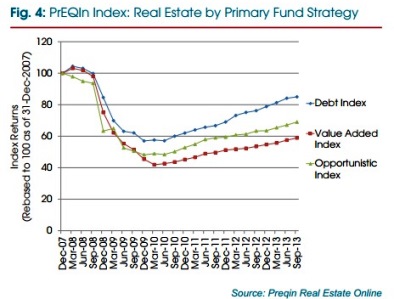(May 12, 2014) — Investors should think long and hard before committing to a multi-manager hedge fund over a multi-strategy one, according to a Cambridge Associates study.
Multi-manager funds, defined as those with capital allocated to numerous “investment teams based on their anticipated performance,” are often accompanied with highly attractive qualities including high returns, fewer drawdowns, and low beta, the consulting firm argued.
As such, multi-manager funds have been gaining popularity, especially since the financial crisis. According to the consulting firm’s report, approximately $15 billion was placed into the 10 largest multi-manager funds from January 2009 to June 2013. On the flip side, the 10 largest traditional multi-strategy funds witnessed net outflows of 20% in the same period, bringing total assets under management down to $140 billion.
“Part of this divergence can be attributed to industry-wide factors that revealed a flaw in the management of some traditional multi-strategy funds—they became increasingly exposed to strategies that fell outside the managers’ core areas of expertise, specifically by investing in highly illiquid securities,” the report said.
During the financial crisis, funds heavily invested in illiquid assets took a hard hit—such as multi-strategy funds—resulting in a crash in Sharpe ratios. Multi-manager funds, not designed to withhold such volatile and illiquid strategies, were able to avoid negative impact from the market environments in 2008 and 2009, according to Cambridge Associates. This was also in line with the way multi-manager funds derived a majority of their returns from equities.
Multi-manager funds were also able to secure “high-profile investing talent” over the past few years, the report found, largely due to attractive compensation and the ability to avoid high start-up costs.
Despite these appealing qualities, investors should be wary of high investment fees and frequent turnover of traders within investment teams to ensure the firm is appropriate for their needs.
“Multi-manager firms tend to be quick to fire trading teams when they underperform,” the report said. “While this practice may help to subdue losses in the fund, the turnover also means that it is particularly difficult to anticipate the future sources of fund returns.”
The high turnover rate could also contribute to a loss of opportunities to grow assets at a lower cost, the report continued. Since the fund need not pay incentive fees to the trader until the trader offsets previous losses, the investors may be hurt short-term from these less profitable traders.
Fees were reported as being considerably more expensive for multi-manager funds than traditional funds, the report found. Unlike the fixed fee structures of traditional funds, multi-manager funds could rack up management fees and investment-related expenses in addition to incentive fees.
However, according to Cambridge Associates’ analysis of historical returns, the more expensive funds generally outperformed the inexpensive funds on a risk-adjusted basis. A caveat, though, was that the average multi-manager fund needed to earn 40% higher profits for investors to experience the same net return as with an average traditional multi-strategy fund.
“While this is a broad generalization that ignores different uses of leverage, we find it generally consistent with multi-manager firms’ tendency to place more stringent return expectations on its traders,” the report said.
Related Content: Infographic: 2013 Periodic Table of Hedge Fund Returns

